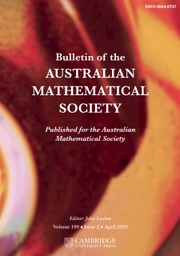The spread of wildfires is highly uncertain and difficult to predict, posing significant danger to both human and animal life, as well as various types of vegetation. Mathematical modelling serves as a valuable tool for predicting fire behaviour, with the ability to incorporate uncertain circumstances and randomness through probabilistic approaches. This thesis focuses on the two-dimensional modelling process of fire dynamics, emphasising the consideration of environmental factors such as wind input as stochastic variables. It is crucial for the model to dynamically update these factors over time to enhance realism.
To tackle the inherent uncertainty in wildfire dynamics, a novel approach is introduced, using stochastic effects to capture the natural variability in spread. The methodology employs Spark [3], a flexible solver developed by CSIRO, to simulate wildfire propagation over time using the level set method. The capabilities of the Spark solver are extended by integrating stochasticity into the level set approach. By introducing stochastic noise into the simulations, the objective is to generate more robust predictions of fire spread. This accounts for sources of uncertainty and dynamic effects, including variations in fuels and localised fire-generated air flows.
Validation of the method and calibration of model parameters are conducted using both experimental fire data and simulated datasets. The results are compared with deterministic simulations that do not account for stochastic effects in the solver. The findings underscore the potential of incorporating stochasticity into wildfire spread modelling, presenting a promising avenue for more accurate and reliable predictions in the face of natural variability and dynamic fire behaviours.
Some of this research has appeared in [Reference Masoudian, Sharples, Jovanoski, Towers and Watt1, Reference Masoudian, Sharples, Jovanoski, Watt, Towers, Vervoort, Voinov, Evans and Marshall2].


